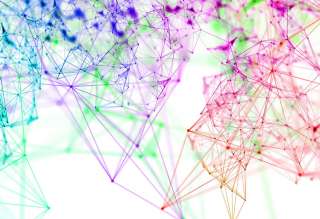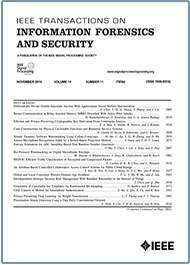- Our Story
- Publications & Resources
- Publications & Resources
- Publications
- IEEE Signal Processing Magazine
- IEEE Journal of Selected Topics in Signal Processing
- IEEE Signal Processing Letters
- IEEE/ACM Transactions on Audio Speech and Language Processing
- IEEE Transactions on Computational Imaging
- IEEE Transactions on Image Processing
- IEEE Transactions on Information Forensics and Security
- IEEE Transactions on Multimedia
- IEEE Transactions on Signal and Information Processing over Networks
- IEEE Transactions on Signal Processing
- IEEE TCI
- IEEE TSIPN
- Data & Challenges
- Submit Manuscript
- Guidelines
- Information for Authors
- Special Issue Deadlines
- Overview Articles
- Top Accessed Articles
- SPS Newsletter
- SigPort
- SPS Resource Center
- Publications Feedback
- Publications FAQ
- Blog
- News
- Dataset Papers
- Conferences & Events
- Community & Involvement
- Professional Development
- For Volunteers
- Information for Authors-OJSP
-
Home
An Exciting Juncture for Signal Processing Research: On Building Bridges, Challenges, and Opportunities
Conferences Events IEEE JSTSP Article IEEE Signal Processing Magazine IEEE TIFS Article IEEE TMM Article IEEE TSP Article Jobs in Signal Processing Lectures Machine Learning Seasonal Schools Signal Processing News SPM Article SPS Distinguished Lectures SPS Newsletter Article SPS Webinar SPS Webinars SPS Webinar Series Webinar webinars -
Our Story
What is Signal Processing?

The technology we use, and even rely on, in our everyday lives –computers, radios, video, cell phones – is enabled by signal processing. Learn More » -
Publications & Resources
-
SPS Resources
- Signal Processing Magazine The premier publication of the society.
- SPS Newsletter Monthly updates in Signal Processing
- SPS Resource Center Online library of tutorials, lectures, and presentations.
- SigPort Online repository for reports, papers, and more.
- SPS Feed The latest news, events, and more from the world of Signal Processing.
-
SPS Resources
-
Conferences & Events
-
Community & Involvement
-
Membership
- Join SPS The IEEE Signal Processing Magazine, Conference, Discounts, Awards, Collaborations, and more!
- Chapter Locator Find your local chapter and connect with fellow industry professionals, academics and students
- Women in Signal Processing Networking and engagement opportunities for women across signal processing disciplines
- Students Scholarships, conference discounts, travel grants, SP Cup, VIP Cup, 5-MICC
- Young Professionals Career development opportunities, networking
- Get Involved
-
Technical Committees
- Applied Signal Processing Systems
- Audio and Acoustic Signal Processing
- Bio Imaging and Signal Processing
- Computational Imaging
- Image Video and Multidimensional Signal Processing
- Information Forensics and Security
- Machine Learning for Signal Processing
- Multimedia Signal Processing
- Sensor Array and Multichannel
- Signal Processing for Communication and Networking
- Signal Processing Theory and Methods
- Speech and Language Processing
- Technical Working Groups
- More TC Resources
-
Membership
-
Professional Development
-
Professional Development
- Mentoring Experiences for Underrepresented Young Researchers (ME-UYR)
- Micro Mentoring Experience Program (MiME)
- Distinguished Lecturer Program
- Distinguished Lecturers
- Distinguished Lecturer Nominations
- Past Lecturers
- Distinguished Industry Speaker Program
- Distinguished Industry Speakers
- Distinguished Industry Speaker Nominations
- Industry Resources
- IEEE Training Materials
- Jobs in Signal Processing: IEEE Job Site
-
Career Resources
- SPS Education Program Educational content in signal processing and related fields.
- Distinguished Lecturer Program Chapters have access to educators and authors in the fields of Signal Processing
- PROGRESS Initiative Promoting diversity in the field of signal processing.
- Job Opportunities Signal Processing and Technical Committee specific job opportunities
- Job Submission Form Employers may submit opportunities in the area of Signal Processing.
-
Professional Development
-
For Volunteers
-
For Board & Committee Members
- Board Agenda/Minutes* Agendas, minutes and supporting documentation for Board and Committee Members
- SPS Directory* Directory of volunteers, society and division directory for Board and Committee Members.
- Membership Development Reports* Insight into the Society’s month-over-month and year-over-year growths and declines for Board and Committee Members
-
For Board & Committee Members
Popular Pages
Today's:
- Submit a Manuscript
- (MLSP 2024) 2024 IEEE International Workshop on Machine Learning for Signal Processing
- Information for Authors
- (SLT 2024) 2024 IEEE Spoken Language Technology Workshop
- IEEE Signal Processing Letters
- SPS Scholarship Program
- IEEE/ACM Transactions on Audio Speech and Language Processing
- IEEE Transactions on Multimedia
- IEEE Transactions on Image Processing
- IEEE Signal Processing Magazine
- Conference Call for Papers
- IEEE Transactions on Information Forensics and Security
- Signal Processing 101
- (ACSSC 2024) 2024 Asilomar Conference on Signals, Systems, and Computers
- Information for Authors-SPL
All time:
- Information for Authors
- Submit a Manuscript
- IEEE Transactions on Image Processing
- 404 Page
- IEEE/ACM Transactions on Audio Speech and Language Processing
- IEEE Transactions on Information Forensics and Security
- IEEE Transactions on Multimedia
- IEEE Signal Processing Letters
- IEEE Transactions on Signal Processing
- Conferences & Events
- IEEE Journal of Selected Topics in Signal Processing
- Information for Authors-SPL
- Conference Call for Papers
- Signal Processing 101
- IEEE Signal Processing Magazine
Last viewed:
- (CAI 2023) IEEE Conference on Artificial Intelligence
- (SAM 2024) 2024 IEEE 13th Sensor Array and Multichannel Signal Processing Workshop
- Decoding Silent Reading EEG Signals Using Adaptive Feature Graph Convolutional Network
- IEEE OJSP Special Issue on Adversarial Machine Learning: Bridging the Gap between In Vitro and In Vivo Research
- (MLSP 2024) 2024 IEEE International Workshop on Machine Learning for Signal Processing
- (ICIP 2025) 2025 IEEE International Conference on Image Processing
- IEEE Transactions on Computational Imaging
- (DCC 2025) 2025 Data Compression Conference
- Volunteer Opportunities
- Member Discounts: Save on car rental
- Video & Image Processing Cup
- Rick Blum (Lehigh University, USA)
- (CISA 2024) 2024 IEEE Conference on Computational Imaging Using Synthetic Apertures
- Rick Blum (Lehigh University, USA)
- The Neural-SRP Method for Universal Robust Multi-Source Tracking
Steganography Embedding Cost Learning With Generative Multi-Adversarial Network
You are here
TIFS Menu
Publications & Resources
- Publications & Resources
- Publications
- Submit a Manuscript
- Editorial Board Nominations
- Challenges & Data Collections
- Publication Guidelines
- Information for Authors
- Special Issue Deadlines
- Overview Articles
- Top Accessed Articles
- SPS Newsletter
- SigPort
- SPS Resource Center
- Publications Feedback
- Publications FAQ
- Blog
- News
For Authors
Top Reasons to Join SPS Today!
1. IEEE Signal Processing Magazine
2. Signal Processing Digital Library*
3. Inside Signal Processing Newsletter
4. SPS Resource Center
5. Career advancement & recognition
6. Discounts on conferences and publications
7. Professional networking
8. Communities for students, young professionals, and women
9. Volunteer opportunities
10. Coming soon! PDH/CEU credits
Click here to learn more.
Steganography Embedding Cost Learning With Generative Multi-Adversarial Network
Since the generative adversarial network (GAN) was proposed by Ian Goodfellow et al. in 2014, it has been widely used in various fields. However, there are only a few works related to image steganography so far. Existing GAN-based steganographic methods mainly focus on the design of generator, and just assign a relatively poorer steganalyzer in discriminator, which inevitably limits the performances of their models. In this paper, we propose a novel Steganographic method based on Generative Multi-Adversarial Network (Steg-GMAN) to enhance steganography security. Specifically, we first employ multiple steganalyzers rather than a single steganalyzer like existing methods to enhance the performance of discriminator. Furthermore, in order to balance the capabilities of the generator and the discriminator during training stage, we propose an adaptive way to update the parameters of the proposed GAN model according to the discriminant ability of different steganalyzers. In each iteration, we just update the poorest one among all steganalyzers in discriminator, while update the generator with the gradients derived from the strongest one. In this way, the performance of generator and discriminator can be gradually improved, so as to avoid training failure caused by gradient vanishing. Extensive comparative results show that the proposed method can achieve state-of-the-art results compared with the traditional steganography and the modern GAN-based steganographic methods. In addition, a large number of ablation experiments verify the rationality of the proposed model.
TIFS Articles
- BG: A Modular Treatment of BFT Consensus Toward a Unified Theory of BFT Replication
- WF-Transformer: Learning Temporal Features for Accurate Anonymous Traffic Identification by Using Transformer Networks
- Steganography Embedding Cost Learning With Generative Multi-Adversarial Network
- Gait Attribute Recognition: A New Benchmark for Learning Richer Attributes From Human Gait Patterns
SPS on Twitter
- DEADLINE EXTENDED: The 2023 IEEE International Workshop on Machine Learning for Signal Processing is now accepting… https://t.co/NLH2u19a3y
- ONE MONTH OUT! We are celebrating the inaugural SPS Day on 2 June, honoring the date the Society was established in… https://t.co/V6Z3wKGK1O
- The new SPS Scholarship Program welcomes applications from students interested in pursuing signal processing educat… https://t.co/0aYPMDSWDj
- CALL FOR PAPERS: The IEEE Journal of Selected Topics in Signal Processing is now seeking submissions for a Special… https://t.co/NPCGrSjQbh
- Test your knowledge of signal processing history with our April trivia! Our 75th anniversary celebration continues:… https://t.co/4xal7voFER
Home | Sitemap | Contact | Accessibility | Nondiscrimination Policy | IEEE Ethics Reporting | IEEE Privacy Policy | Terms | Feedback
© Copyright 2024 IEEE – All rights reserved. Use of this website signifies your agreement to the IEEE Terms and Conditions.
A not-for-profit organization, IEEE is the world's largest technical professional organization dedicated to advancing technology for the benefit of humanity.











